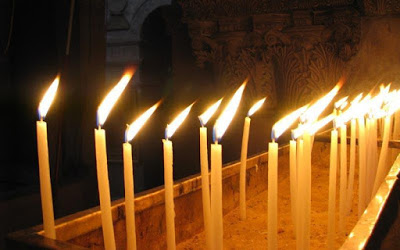In an atmosphere of intense emotion and religious fervor, yesterday evening, after six hundred years, an evening service was held at the Church of Agia Anna, in Famagusta, which is occupied within the walls.
In addition to the three hundred believers from the free areas, they attended the service, as well as the procession of the icon of St. Anna. The procession was officiated by the Archbishop of the Maronites, Joseph Sueif.
In his statements to KYPE, the Chairman of the Committee for the ancient Maronite churches, Dr. Ioannis Karis, expressed his emotion, because, as he said, after 600 years, an evening service was held at the Church of Agia Anna.
"This church has been operating since the conquest of Famagusta by the Turks in 1571. It has remained closed since then," said Mr. Karis.
As he noted "the Church of St. Anne is an important monument, which documents the presence of the Maronites, in the medieval city of Famagusta", to add that the documents from the 14th century inform that the Maronites in Famagusta have a church, that of Agia Anna ”.
Asked by KYPE what is the condition of the Church of Agia Anna, Mr. Karis said that it is still maintained in fairly good condition, noting that although it is one of the smallest churches in medieval Famagusta, nevertheless it is much larger and richer than all the other Maronite churches.
"Of course," he noted, "it needs maintenance and will definitely need to be furnished accordingly at some point, in order to become a regular church."
Church of Agia Anna of the Maronites
This temple is today in a military zone near the Martinego bastion. The church is of the 14th century, is single-aisled and presents features of the Gothic architecture of southern France.
Above the main entrance are traces of a mural, with St. Anna and two other faces. Inside there are 14th century frescoes with Frankish inscriptions.
Within the walled city of Famagusta there are other important archeological sites and churches, such as the Church of St. Mary of the Armenians, the Church of the Carmelites, the Church of St. George of Exile, the Church of St. George of Latina, the Church of St. George of the Greeks, the Cathedral of Agios Nikolaos, the Church of the Apostles Peter and Paul, the Church of the Holy Zone and the Church and Monastery of Agios Frangiskos.
Source: KYPE

